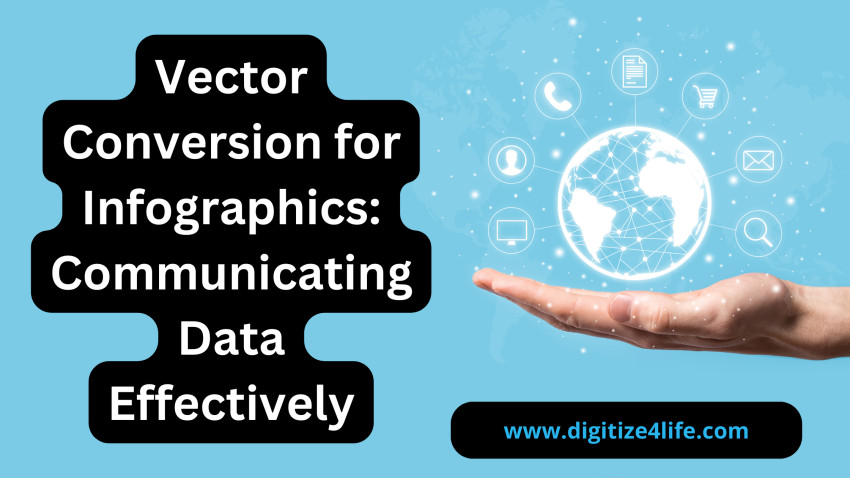
Infographics with Vector Conversion: Effective Data Communication
First of all,
Information is devoured in the digital age at a never-before-seen pace. Businesses and content creators need to display information in aesthetically pleasing and easily readable ways if they want to stand out in this sea of data. This is when infographic vector conversion comes into play. This blog post will discuss the value of vector graphics and how they may improve your data communication by helping you create visually stunning infographics.
Why Vector drawings Are Important: Perfect for infographics, vector drawings can be scaled without sacrificing quality. Vector graphics, as opposed to raster images, generate shapes by mathematical formulas, guaranteeing that your infographic will seem clean and sharp on all platforms. Scalability is crucial if you want your infographic to be available on many websites and social media platforms.
Advantages of Converting Vectors:
Clarity and Sharpness: Using vector conversion guarantees that your infographics will remain clear and crisp even at high magnifications. This is essential for expressing fine details without compromising the quality of the image.
Flexibility in Size: Vector graphics can be adjusted without sacrificing quality, regardless of the final size—from a thumbnail to a massive poster. Because of its adaptability, you can use infographics in a variety of marketing contexts.
Editing Ease: Since vector files are editable, updating your infographics is a breeze. This is especially helpful if you wish to periodically refresh your material or if your data changes.
How to Transform Into a Vector:
Employ Vector Software: Two well-liked programmers for converting vector files are Adobe Illustrator and Inks cape. Import your current infographic and change the raster components to vectors that can be scaled.
Employ a Professional: If you don't have design experience, think about working with a graphic designer who has vector conversion experience. They can provide a smooth changeover between vector and raster visuals.
Online Tools: You may convert raster images to vectors using a number of online tools. However, the outcomes could differ, so picking a trustworthy platform is crucial.
The Best Ways to Create Vector Infographics:
Simplicity is Key: To prevent overwhelming your readers, keep your infographic simple and easy to read.
Color Harmony: Select a color palette that both elevates readability and fits your brand. Keep everything consistent for a polished appearance.
Font Legibility: Choose readable typefaces whenever possible, particularly for small text. Verify that the fonts you've selected complement the style guide for your brand.
In conclusion, vector conversion significantly enhances the effectiveness of infographics in communicating data. By transforming raster images into scalable vectors, infographics become versatile assets that maintain visual integrity across various platforms and sizes. This process ensures clarity, scalability, and adaptability, facilitating impactful storytelling and comprehension of complex information. Embracing vector conversion is essential for maximizing the communicative power of infographics in today's digital landscape.




